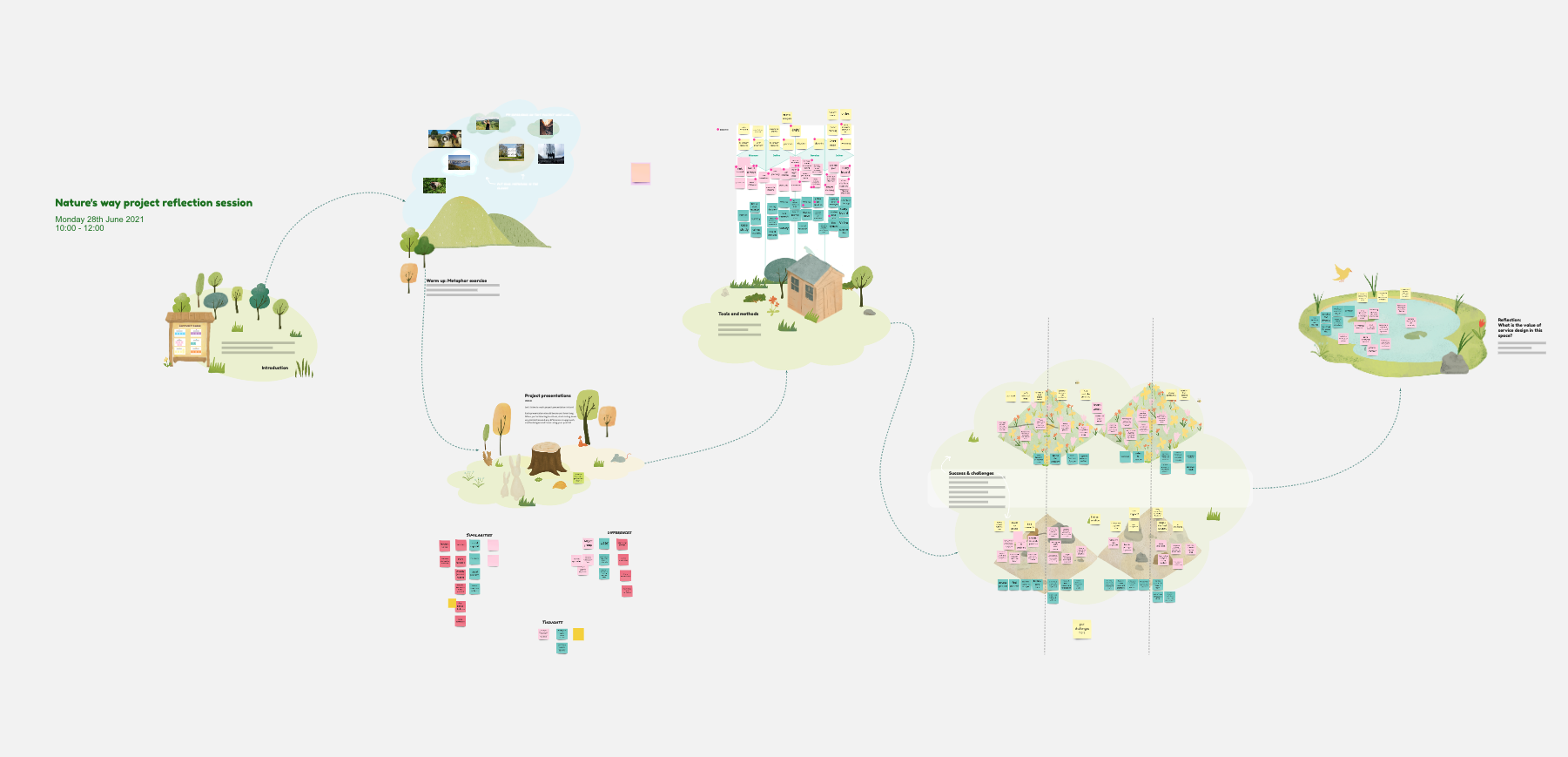One of the key things our research project wants to find out is the potential value that design could bring to those working in Nature-based Solutions for societal wellbeing. As designers who have just been through the process of working in this space, the students were in an amazing position to share some key insights. We also invited MA Service Design second year students, Ziwei Liu and Huizi Zhang, whose Naturebreak project looked at how to reduce stress from remote working through engagements with nature.



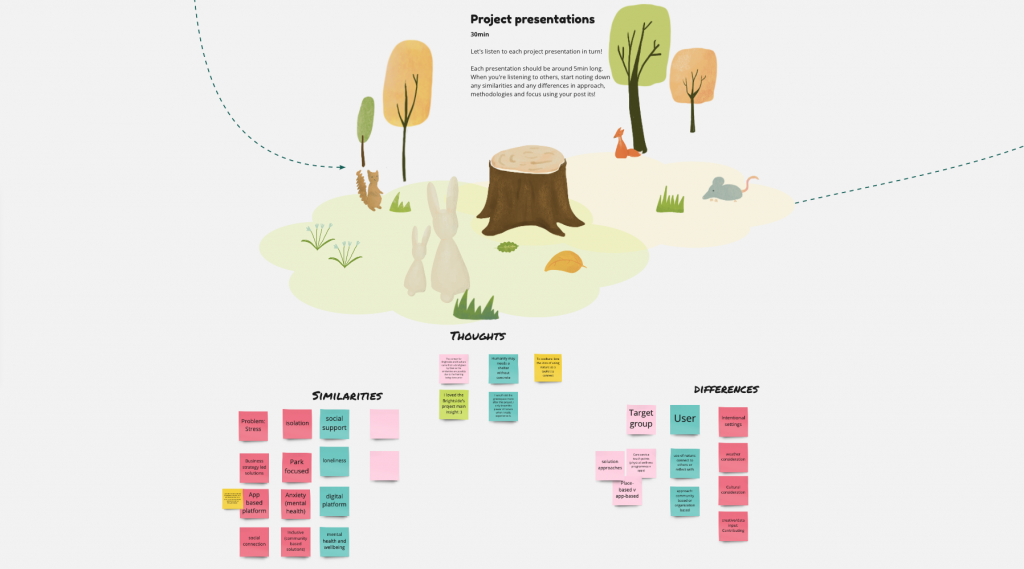
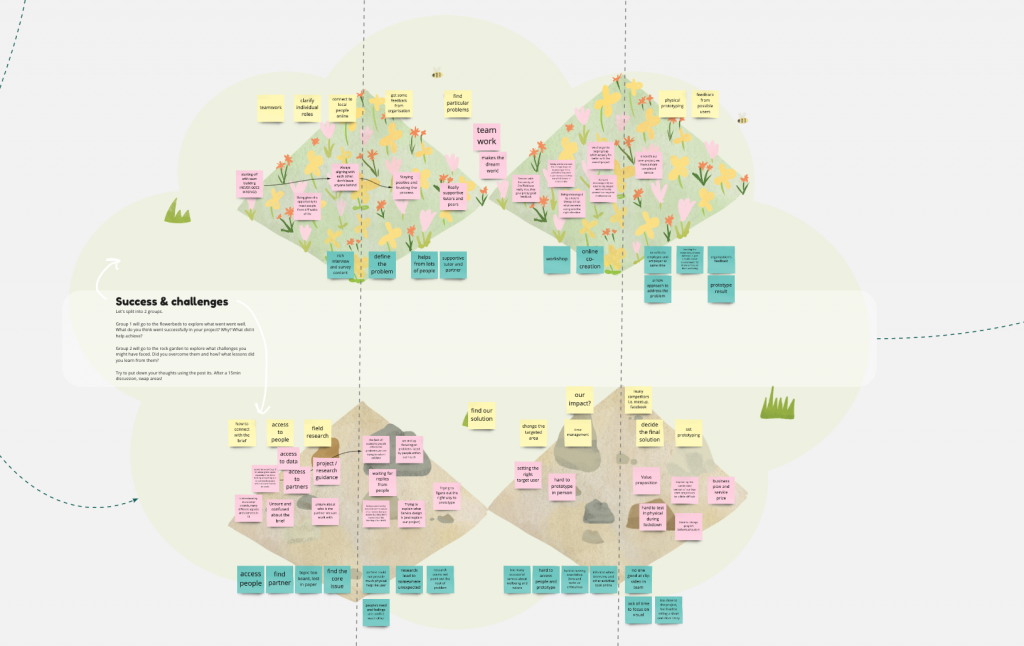
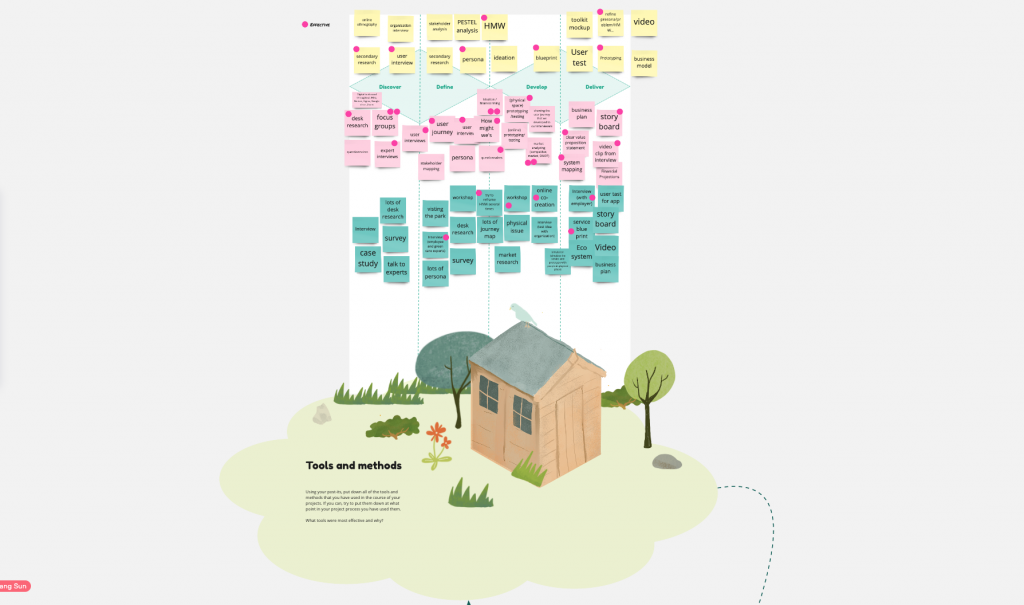
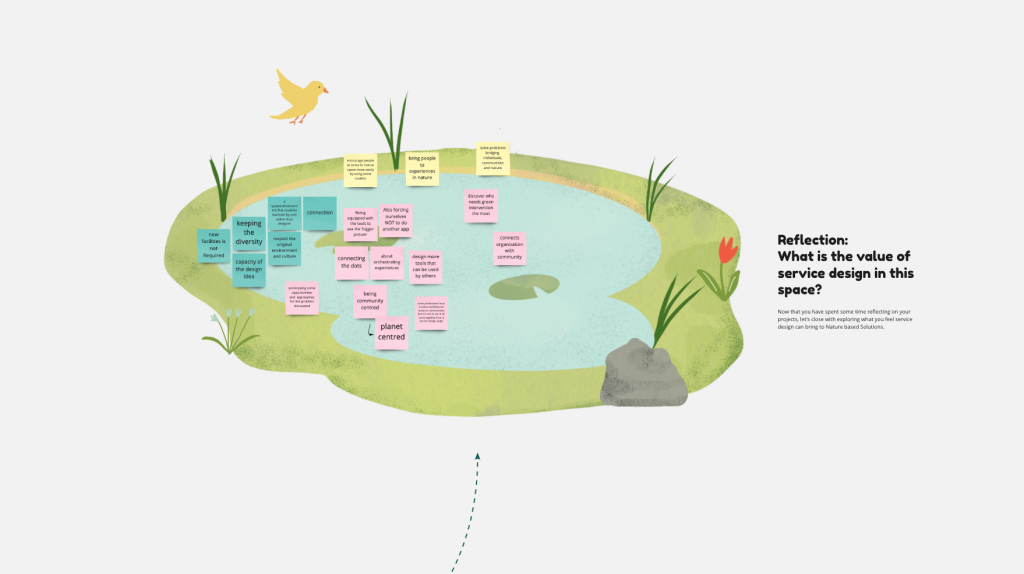
Key takeaways
The challenges faced with the students included the lack of access to the communities and users that they meant to collaborate with. The pandemic also added further restrictions on this. Given the ‘user-centric’ and ‘co-design’ and ‘co-creation’ are in the centre of the approach, this has put significant constraint on what the teams were able to achieve. With this in mind, the students see that service design in developing NbS has multiple values including:
- Being a connector of the fragmented system (systemic approach & collaboration):
“Some professions focus on place building and some on communities but it’s nice to see it all come together from a service design angle.”
“Being equipped with the tools to see the ‘bigger picture’”
“Solve problems bridging individuals, communities and nature”
“Connects organisation with community”
- Being able to identify the users and the real problems (user-centric, empathy, problem framing):
“Discover who needs green intervention the most”
“Prototyping some opportunities and approaches for the problem discovered”
“Being community centred”
“It’s about orchestrating experiences.”
- Providing a range of useful tools (the process and methods):
“Design more tools that can be used by others”
“Encourage people to come to nature space more easily by using some toolkits”
A big thank you to Debby Hsiao, Yusuke Kanda, Nini Lin, Ziwei Liu, Stefanie Yanting Shen, Ruoyang Sun, Cristiana Stanciu, Serene Yap, and Huizi Zhang for taking part!
